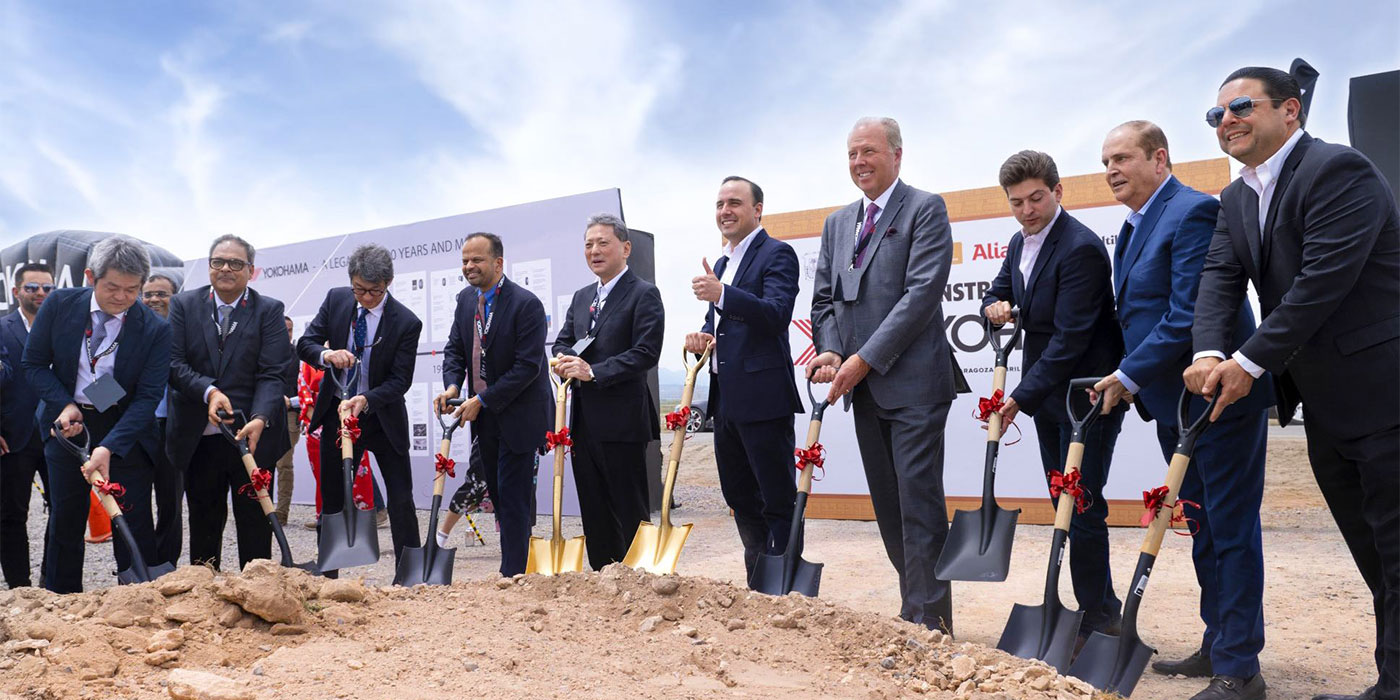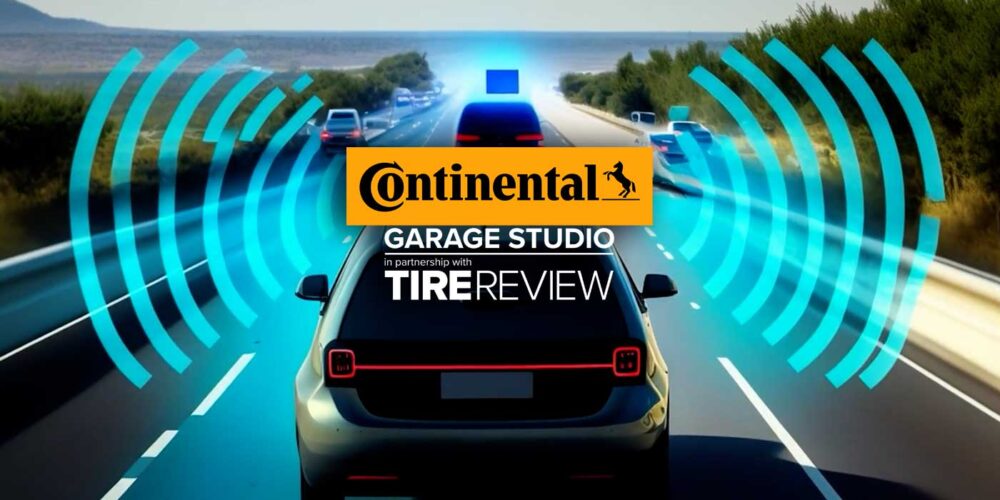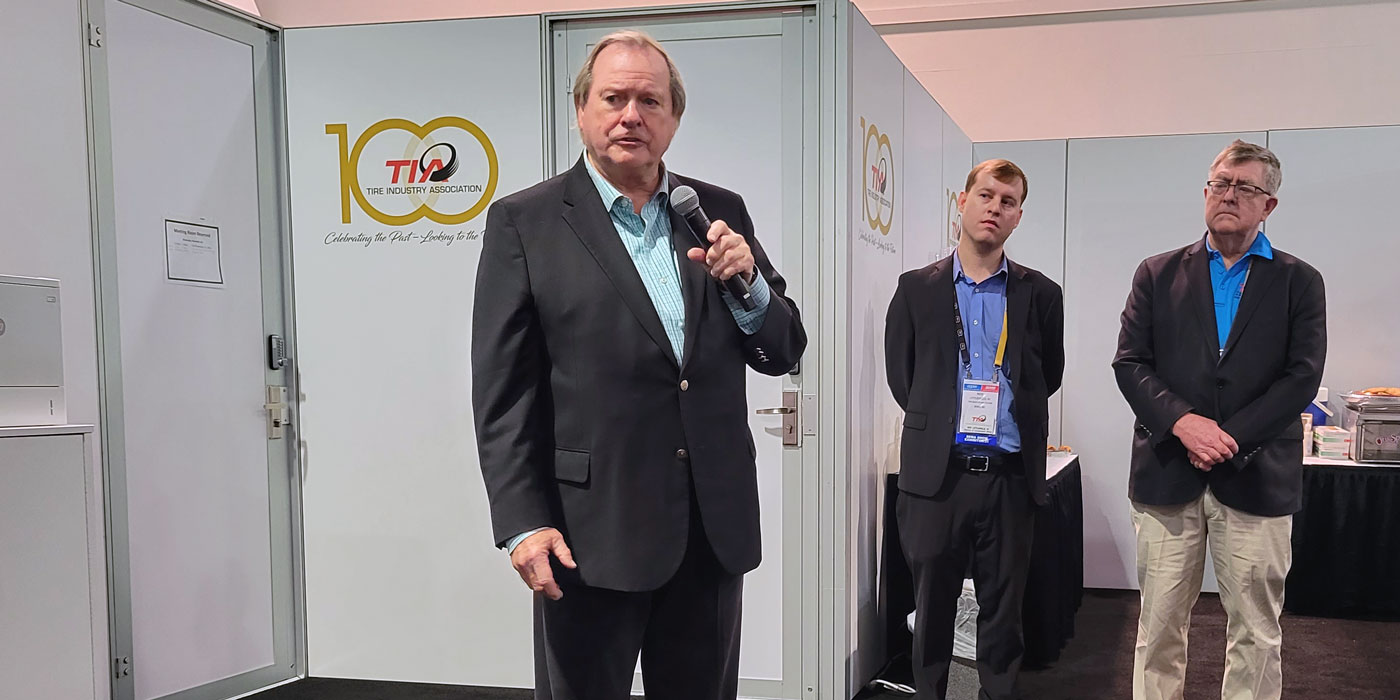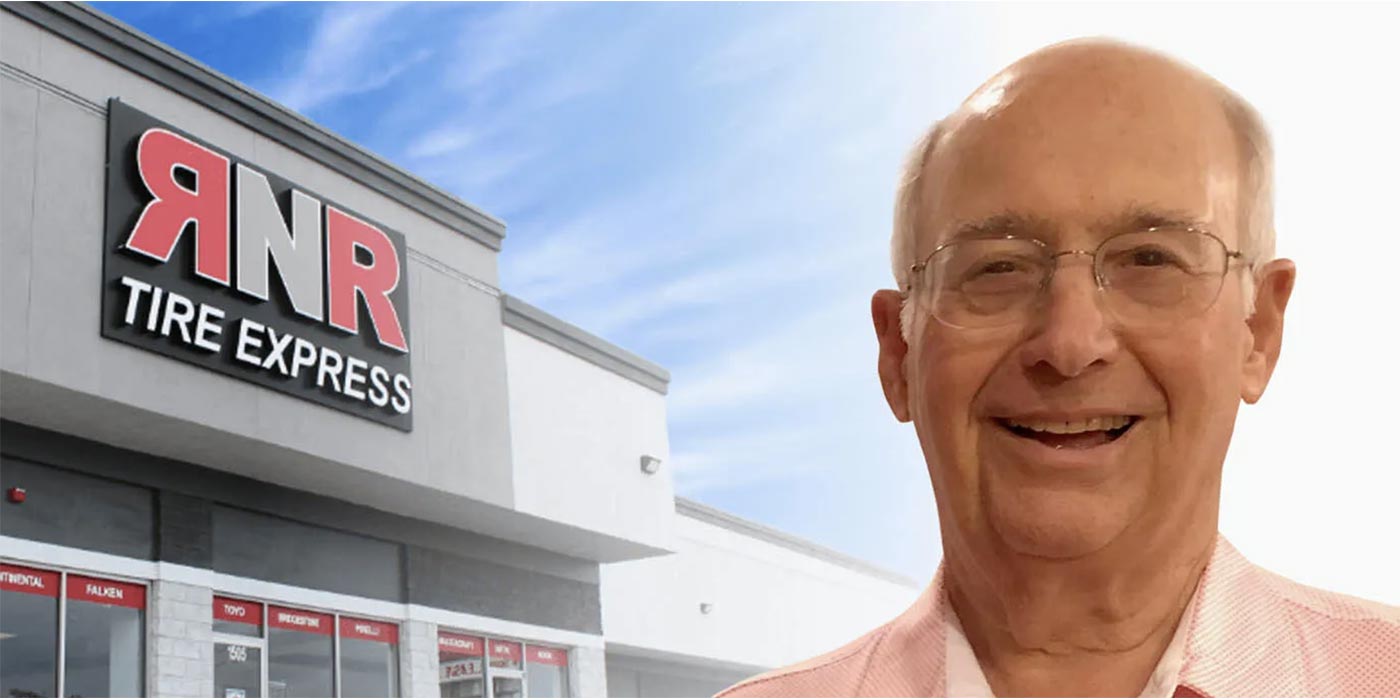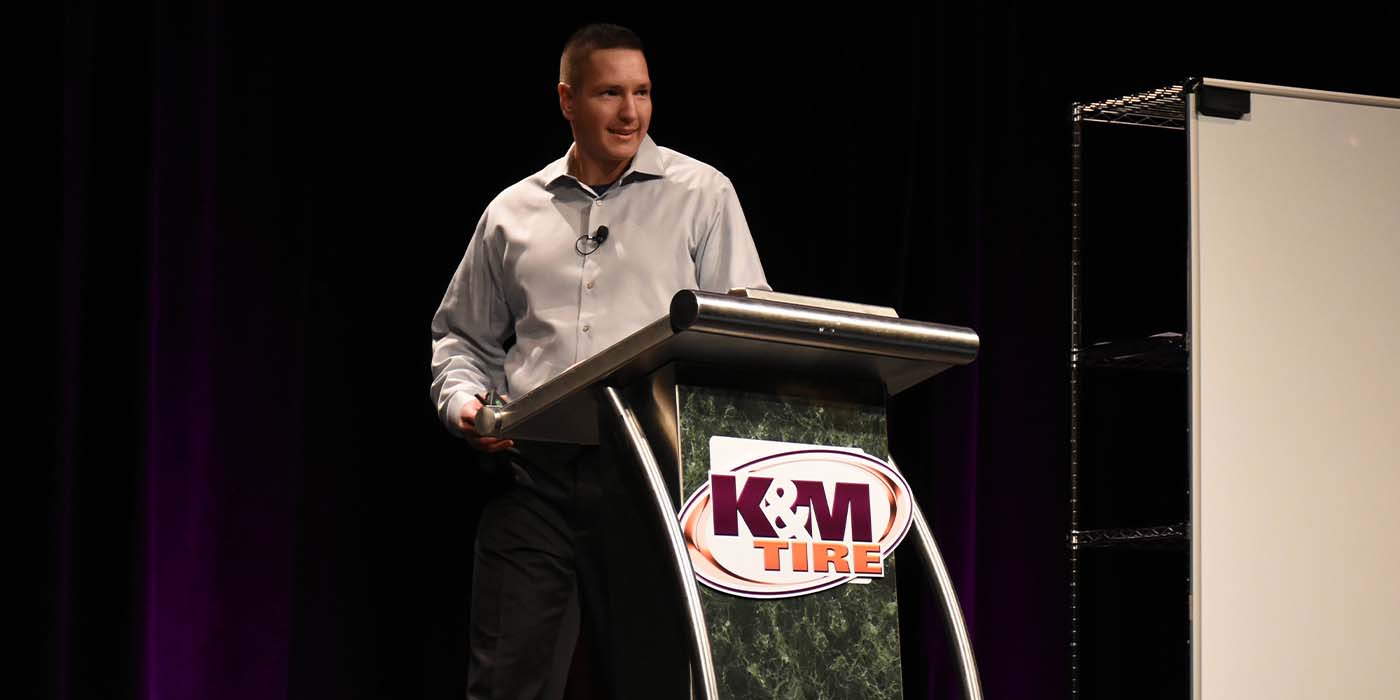New Year, New Rules
Disputed OSHA Ergonomic Regs in Effect – For Now
The Occupational Safety and Health Administration (OSHA), with its final ruling on workplace ergonomic standards, is giving tire dealers, retreaders, tire companies and millions of other businesses a New Year’s resolution they’re not going to enjoy.
The standard, aimed at reducing common repetitive-motion injuries in the workplace, has from its inception been the subject of searing scrutiny and challenges by business groups who feel it is too broad, too vague and unsupported by scientific evidence.
Repetitive-motion injuries, called musculoskeletal disorders (MSDs), include carpal tunnel syndrome, back injuries and tendonitis. Slips, falls and other accidents are not covered by the regulation, which took effect Jan. 16. Business owners will not be required to prove compliance with the law until Oct. 14.
In the tire industry, common work like mounting tires and wheels, lifting and stacking tires, servicing vehicles, inspecting tires and more would come under intense scrutiny under the new regulations.
Although the number of MSDs reported, like all work-related injuries and illnesses, has declined by more than 20% since 1992, Department of Labor statistics support OSHA’s claim that "These disorders have been the largest single job-related injury and illness problem in the U.S. for the last decade, consistently accounting for 34% of all reported injuries and illnesses." Other countries with ergonomics regulations in place include the United Kingdom, Sweden, Australia, Canada, Japan, Pakistan, Ecuador and South Africa.
Several consolidated lawsuits appealing the regulations include businesses that run the gamut from the tire and rubber industry to soft drink producers, turkey processors and drug stores. The tire industry is well-represented in these lawsuits, with the Tire Association of North America (TANA), the Rubber Manufacturers Association (RMA) and the International Tire and Rubber Association (ITRA) joining others as members of the National Coalition on Ergonomics (NCE), a group that opposes the rule.
Other notables also opposing the new OSHA regulations include the National Association of Manufacturers, the U.S. Chamber of Commerce, Federal Express, UPS and the American Trucking Association.
"During the whole process, OSHA has not been listening to the concerns of the small business community," Becky MacDicken, government affairs director at TANA, said. "The fact is, they just didn’t listen. They’ve continued to ram this down our throats.
"We have to make sure the legislation will help people without putting small businessmen out of business," she said. "We want representation for even the smallest tire dealers up on Capitol Hill and in (government) agencies."
Tire industry execs are looking to the Bush Administration for help, saying Republicans have been more likely to support the concerns of business in the past.
"I believe the new administration will re-evaluate several EPA and OSHA regulations issued in the waning days of the Clinton Administration," Marvin Bozarth, executive director of ITRA, said. "ITRA representatives are hopeful that President Bush will retract this burdensome regulation."
Tire dealers, retreaders and other small businesses, TANA and others contend, are going to be hit especially hard by the rule. Large companies, they feel, will have less of a problem implementing ergonomics programs that call for vigilant record-keeping, the hiring of consultants to evaluate each job for ergonomic safety, and possibly the purchase of new equipment specifically designed to meet the needs of workers.
And organizations like the RMA are concerned the amount of money it will take to comply with the rule – OSHA predicts it will cost businesses about $4.5 billion a year to meet the new standards – could drive the small guys out of business. But OSHA says the positive result of that investment will be annual savings of $9.1 billion in absenteeism and workers’ compensation claims.
As expected, virtually no one agrees with the dollar figures OSHA claims, most notably the U.S. Small Business Administration’s Office of Advocacy, which believes the rule will cost businesses much more than $4.5 billion a year, although they cannot definitively say by how much.
"Ultimately, this rule could threaten the competitive structure of the rubber products industry," Donald Shea, RMA president and CEO, said.
What Does This Mean?
The rule calls for a series of stages of implementation: If you meet the criteria for one step, you go on to the next. A basic overview is as follows:
- At first, you’re simply expected to provide basic information to employees about common MSDs and their symptoms, how to report MSDs and why it is important, information on "risk factors" or job activities that have been linked to MSD occurrences, and a brief description of OSHA’s standards.
- If a worker reports MSD symptoms, you have to determine whether it’s what OSHA calls an "MSD incident." You may get help from a health care professional to make this determination. An "incident" means the ailment is "work-related and requires days away from work, restricted work, or medical treatment beyond first aid, or the symptoms last for seven consecutive days after reporting."
- If it is an "incident," then you must determine if it meets OSHA’s "action trigger." To do this, you have to look at the worker’s specific job(s) and use a checklist to see whether it involves exposure to one or more of the five "ergonomic risk factors" on one or more days per week. Risk factors are repetition, force, awkward postures, contact stress and vibration.
- If it meets the "action trigger," you can use a "quick fix" option, which means the way the job is done can be improved ergonomically within 90 days (and only one total or no more than two MSDs have occurred in that job in the last 18 months). If a quick fix cannot be made, or if it’s not an option, you must develop and implement a full ergonomics program for that job and others like it.
- A "full ergonomics program" must include management leadership and employee participation, job hazard analysis and control, training, and MSD management. The last part requires you to provide (for free) your employee with access to health care, and if the employee can’t perform his/her usual duties for a time (temporary work restriction) due to the MSD, you must pay him 100% of his wages and benefits. If he has to miss work because of the MSD, you must pay 90% of his wages and 100% of benefits for 90 days or until he can safely return to work, whichever comes first.
- If you have 11 or more employees, you must keep compliance records for three years or until updated.
- A grandfather clause allows employers who already have ergonomics programs in place to keep using their own programs, but only if certain criteria are met – one of them being that the program has all the elements of OSHA’s program.
If You’re Cited Unfairly?
If a business owner feels an OSHA non-compliance citation was inappropriate or violated his rights under the legislation, he can contest it by notifying the OSHA Area Director in writing within 15 working days after receiving the citation. The Notice of Contest will then be forwarded to the OSHA Review Commission, which will assign a judge to hear the case.
In addition, the U.S. Small Business Administration has a regulatory enforcement outfit called the Office of the Ombudsman. You can lodge a complaint about an agency with the Ombudsman’s office, which may follow up with the agency, requesting an explanation of the enforcement action taken, and inform you of the agency’s response. By law, the Ombudsman must provide annual reports on complaints to Congress. Ten Regional Fairness Boards, comprised of small business owners, also contribute to the report to Congress, and you may present concerns to them. If you feel an OSHA citation violates your rights, call 1-800-REG-FAIR to obtain an appraisal form.
Who Can Help Me?
Ross Kogel, executive vice president of TANA, said the association hopes to have a CD-ROM Compliance Guide for tire dealers available by February or March, and possibly a printed edition, as well, for those who do not have access to a computer with a CD-ROM drive.
OSHA itself is available to help, with a free consultation service. Those requesting an OSHA consultation will be visited confidentially by an ergonomics consultant who will not report any routine violations back to OSHA.
However, if the consultatant uncovers unsafe working conditions in your shop that are not corrected within a specified amount of time, they will forward information on your violation on to the appropriate authorities.
OSHA said this does not occur very often. Most of the time, the consultant just looks at your operation, your equipment, etc., and helps to identify potential problems and their solutions.
A consultation visit may be set up by calling your state’s consultation office, the phone number for which can be obtained at 202-693-2200.






